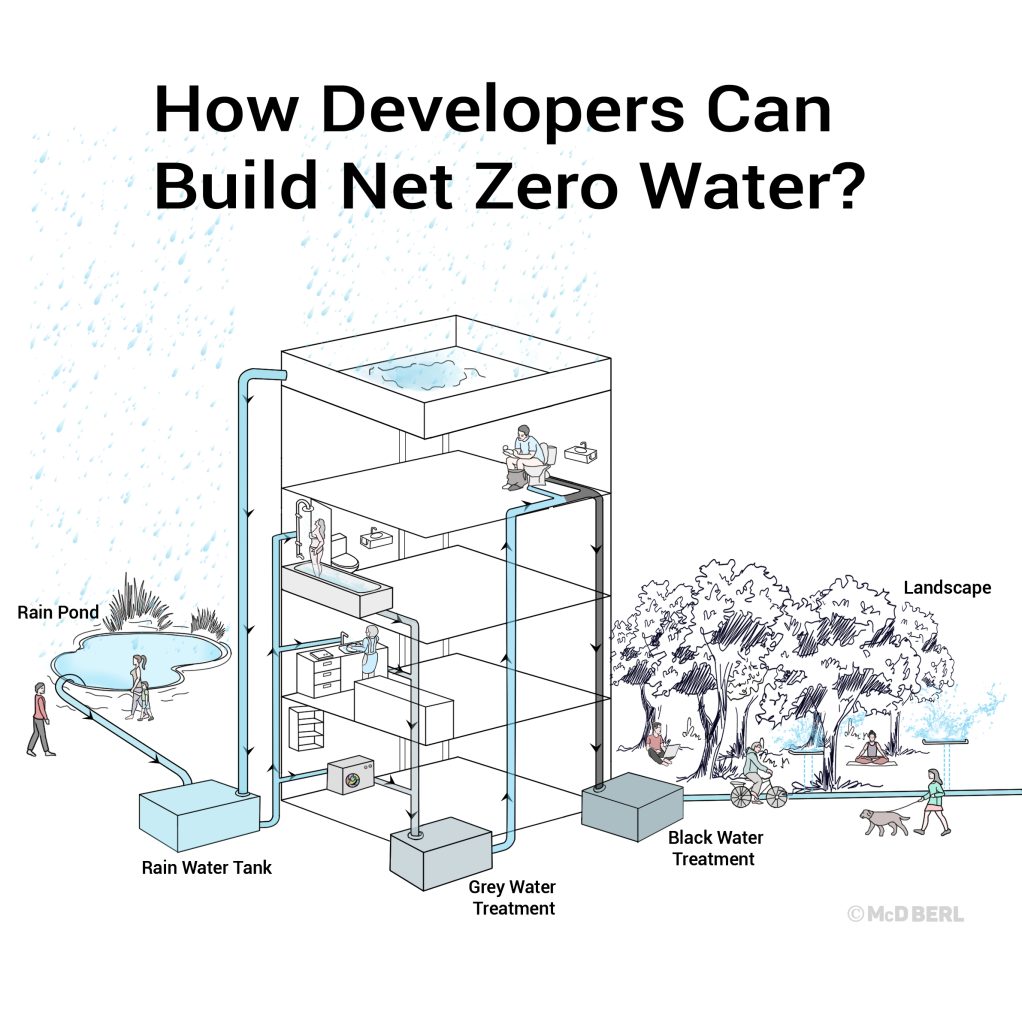How Developers Can Build Net Zero Water?

The persistent problems of drainage smell, clogging, and flooding in urban spaces demand a critical reassessment of the design approaches. The conventional methods that we have been relying on are clearly falling short, and it’s time to acknowledge that. Zero discharge buildings are not just a trendy concept, they’re a necessity. The stench from poorly managed drainage systems and the inconvenience caused by incessant flooding are warning signs that the designs are out of touch with the urgent needs of the modern world. It’s time to break away from the status quo and embrace sustainable drainage solutions.
Self-sustainable water buildings prioritize environmental responsibility by integrating advanced water management systems, rainwater harvesting, permeable pavements, and green roofs to reduce water runoff and strain on traditional drainage. The incorporation of advanced water treatment technologies ensures on-site purification and reuse, addressing issues like drainage smell and clogging. Educating occupants on water conservation, implementing smart meters, and utilizing water-efficient appliances contribute to sustainable living.
Green roofs, permeable surfaces, and rainwater harvesting aren’t just trendy catchphrases, they represent pivotal measures to counteract the environmental and health risks perpetuated by outdated designs. It’s time for a paradigm shift. Buildings should transcend mere aesthetic appeal, they must embody functionality, resilience, and environmental responsibility. This is the era of edifices that not only stand out visually but also stand up to the challenges of sustainability.
As shown in the image it is observed that rainwater plays a pivotal role in meeting diverse needs. Rainwater harvested from the roof is directed into an underground storage tank for further treatment. This treated rainwater is then distributed for various purposes, including bathing, washbasin use, and drinking. Additionally, greywater from showers and washbasins is collected separately in another underground tank. Unlike blackwater, greywater requires less extensive treatment, resulting in significant reductions in energy consumption and chemical usage. The treated greywater is repurposed for flushing water closets. Meanwhile, blackwater from toilets is collected in an underground tank and undergoes treatment in a Sewage Treatment Plant (STP). The STP-treated water is then utilized for landscaping purposes. Simultaneously, the rain pond water undergoes a specialized treatment regimen tailored to meet the demands of (HVAC) applications, showcasing a comprehensive and environmentally conscious approach to water resource management within the system. This integrated system reflects a commitment to water conservation, recycling, and purpose-driven usage throughout various stages of the water cycle within the building.
Assess your designs and ask yourselves: Are you contributing to the urban chaos or working towards solutions? It’s time to put an end to the excuses and start prioritizing a zero-discharge technology. The future of architecture demands it, and so does the well-being of the communities you claim to serve.




